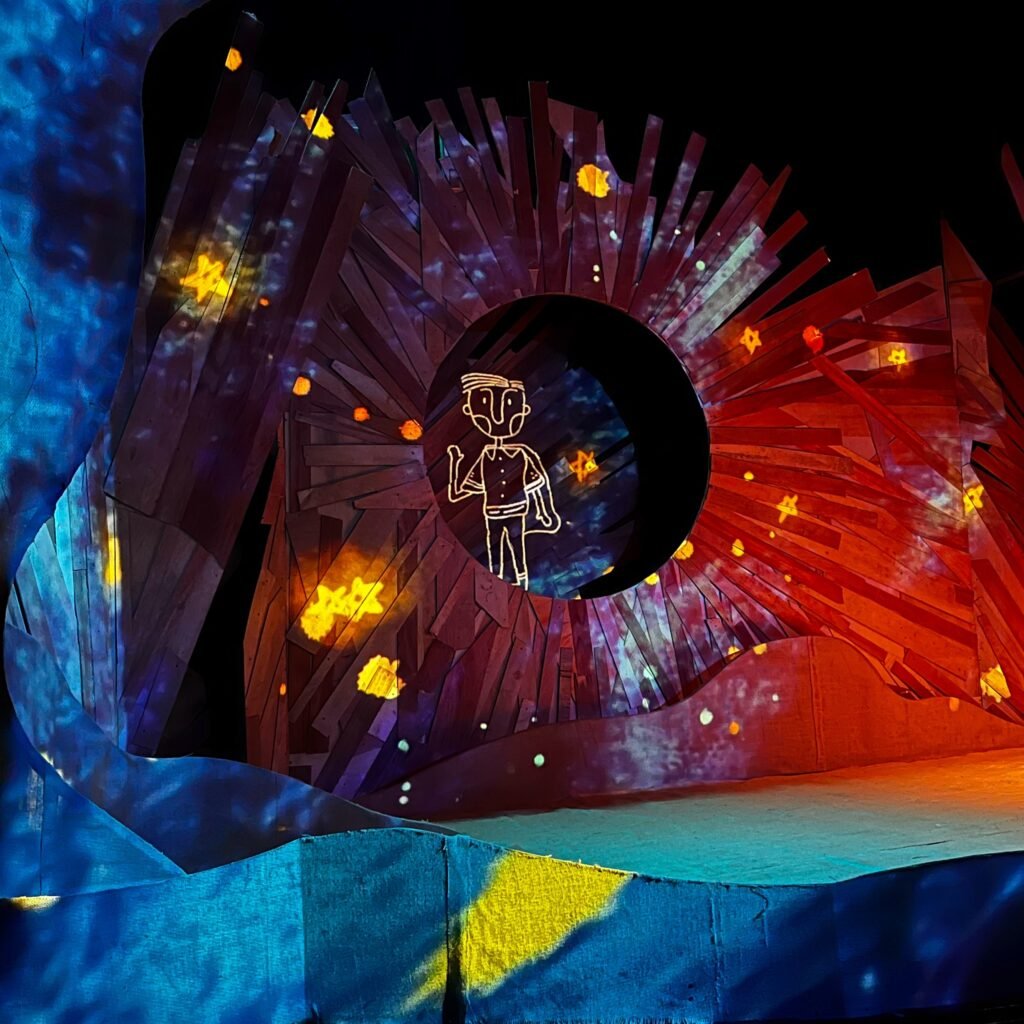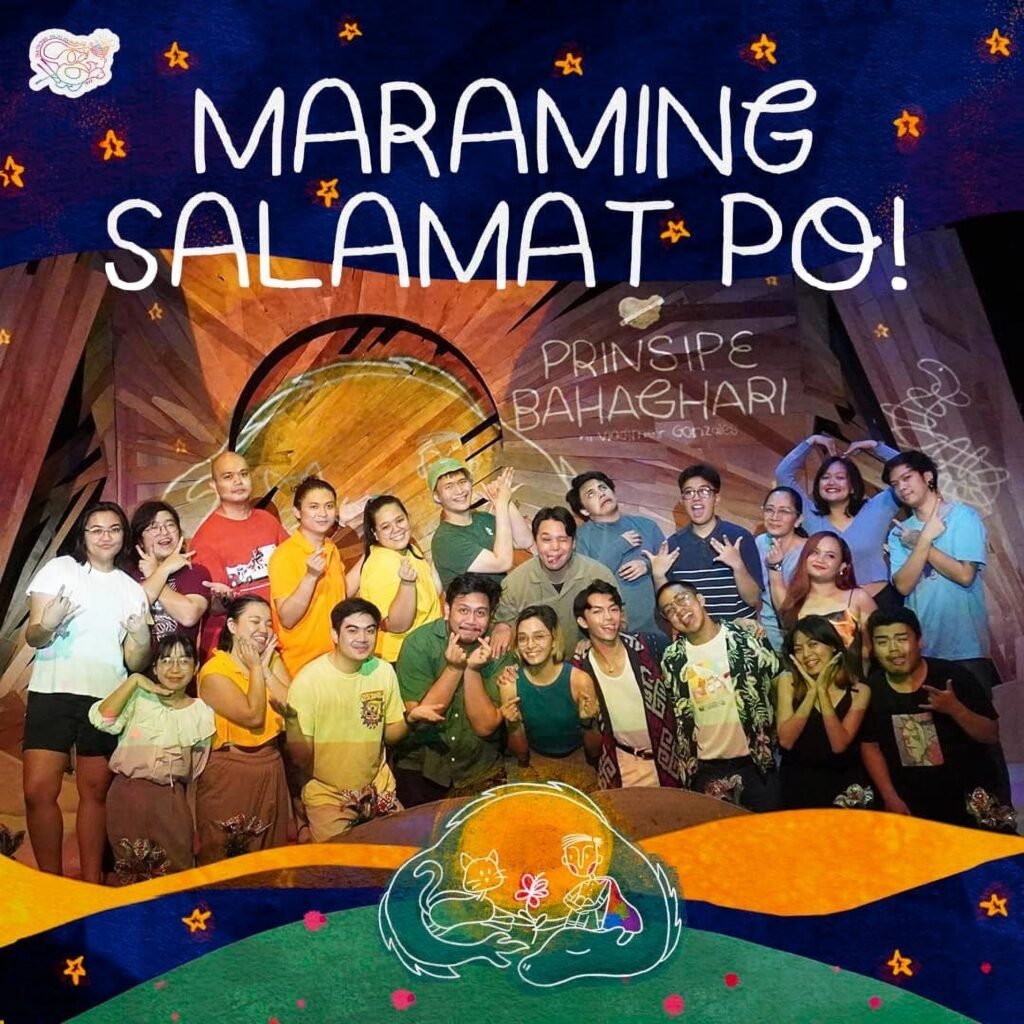Introduction and Interview Gabrielle de la Cruz
One of the famous quotes from the beloved classic The Little Prince by Antoine de Saint-Exupery says: “It is the time you have wasted for your rose that makes your rose so important.” The line teaches us that it is one’s dedication to something that makes it significant. The same could be said for the hundred versions and translations of this story, including the recent Filipino adaptation by the puppet troupe Teatrong Mulat ng Pilipinas (TMP). The troupe shares that they chose to adapt this classic as it is packaged as a children’s book but with lessons that transcend generations, allowing them to mount a show that can be visually appealing to children and emotionally evocative for mature audiences.
Called Prinsipe Bahaghari (Rainbow Prince), the adaptation follows the original plot where a young prince visits different worlds and meets interesting personalities throughout the journey. What makes the hour-long puppet show different, aside from the Filipino translation, is that it references Philippine culture and characters. Instead of a rose, Prinsipe Bahaghari is on a quest to keep a gumamela safe on his home planet. Certain characters from the original were replaced as well, with the fox turned into a pusa (cat), and the boa constrictor swallowing an elephant represented by a bakunawa (serpent-like dragon in Philippine mythology) who swallowed the moon. The story is also set after the eruption of the Taal Volcano, with the play addressing environmental concerns on top of showcasing truths about human nature.
After Prinsipe Bahaghari’s closing show, Kanto had a chat with its director and overall designer Aina Ramolete, along with translator and scriptwriter Vladimeir Gonzales. Below is a snippet of our conversation about the play’s production, the story’s central themes and messages, and TMP’s plans moving forward.


Kanto: Hello, Teatrong Mulat ng Pilipinas! Congratulations on the successful run of Prinsipe Bahaghari! Before we talk about the show, can you quickly introduce yourselves and what you do?
Aina Ramolete, Prinsipe Bahaghari Creator, Director, and Designer: Hello, Gabbie! Thank you so much. We are Teatrong Mulat ng Pilipinas, a puppet troupe founded in 1977 by the late National Artist for Theater Amelia Lapeña-Bonifacio. We aim to highlight Philippine and Asian culture by producing puppet shows for children and adults alike.
We have a yearly show called Papet Pasyon, which we perform every Palm Sunday for free. We have committed to this annual show as our collective offering in the hopes of a good year ahead. On top of that, we do performances when we get invited by schools and participate in international puppet festivals. For those who want to learn about our craft, we also conduct puppetry workshops for children and adults.
Vladimeir Gonzales, Prinsipe Bahaghari Writer and Translator: My name is Vlad Gonzales, and I am a professor at the Department of Filipino and the University of the Philippines Diliman. Before our collaboration with Prinsipe Bahaghari, I first worked with Teatrong Mulat ng Pilipinas’ artistic director Amihan Bonifacio-Ramolete (Aina’s mother) when I started translating and doing adaptations of plays in 2012.
As an independent playwright, I have done several theatrical adaptations and original plays since 2012. Most of my projects are academe-based and I have done adaptations of works by writers Harold Pinter, Brecht, Shakespeare, and Euripides. I have also worked on two Ibong Adarna adaptations in 2013 and 2019.

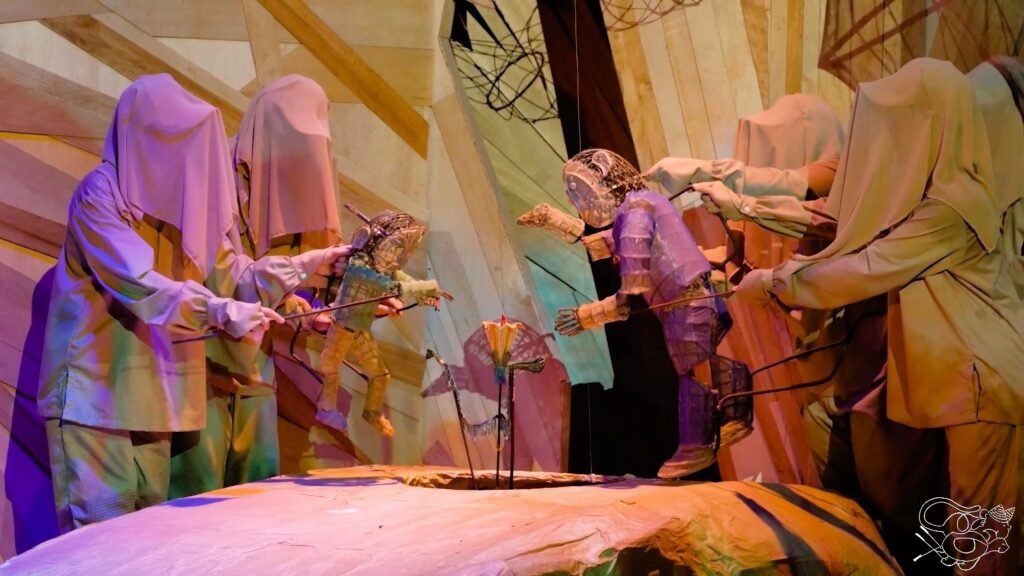
Let’s now step into the world of Prinsipe Bahaghari. Can you tell us why you decided to use an adaptation of The Little Prince for National Children’s Month? What central themes and messages from the classic are particularly relevant to Filipino culture?
Ramolete: Prinsipe Bahaghari carries themes that are universally relevant. It is a play that talks about love and loss in their simplest form, reminding children and adults alike to value the relationships they have created. We often say that the entire show is also dedicated to the younger versions of ourselves, emphasizing that we must never forget our childlike wonder.
The show has been on quite a journey! Walk us through the first steps in making the live run happen. What and how long were the preparations?
Ramolete: Prinsipe Bahaghari was my college thesis, under the guidance of Professor Sofia Guillermo. It was first conceptualized in 2019 and was first filmed in 2021. We felt that it was a good time to stage it as a live performance this year, given that live shows and other events are back on the scene.
Although the staged-to-shoot version in 2021 solidified most of Prinsipe Bahaghari’s looks, additions and changes were still made for this year’s run. We started pre-production around June this year, and auditions were conducted in July. Rehearsals took place from August until November.


As someone who is familiar with The Little Prince, I appreciate how you made Prinsipe Bahaghari truly yours while keeping its timeless lessons intact. What other aspects of the production differ from the book?
Gonzales: Thank you! This adaptation strived to be balanced in showcasing the sense of wonder and all the ruminations on growth and death from The Little Prince. It also aims to highlight advocacies on the environment and development aggression.
Among the burgeoning disciplines in the academe now is eco-criticism, which is the formation of studies with regard to the intersection of various topics on the environment. In the case of Prinsipe Bahaghari, I strived to showcase this while playing with cultural references and Filipino narratives. The play also centers on conversations on the dangers of business, fascist leadership, and any other projects that have been and are being offered to the Filipino community.
Among the recognitions of Prinsipe Bahaghari is an honorable mention for Best Script at the Red Curtain International Festival in 2022. If you were to choose one line from the script that appeals to you most, what would this be and why?
Gonzales: One would be the line “may mga larawan at kulay na sa puso lamang abot-tanaw,” which is comparable to The Little Prince’s famous quote: “It is only with the heart that one can see rightly; what is essential is invisible to the eye.” I also like how the part “…pag-amo ang kasagutan! Maaaring may katulad siya sa hubog at kulay. Pero naiiba siya sa panahong iyong inilaan. Sa pagsintang itinanim” particularly hits different for Filipino audiences, as it creates its own version of the original “What changes our world and our being in the world is that there are things, activities, and people we care for deeply; and we make them as special (for us) as they are.”
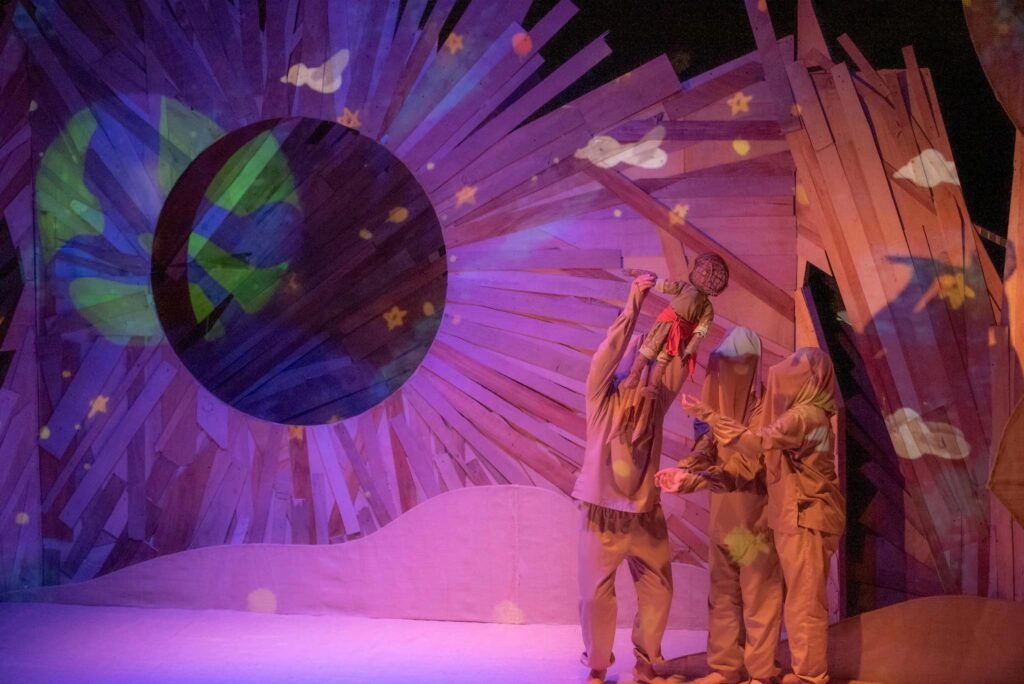

One thing that I also appreciated about the show is how you created puppets out of rattan, a material that is widely used in the Philippines. Can you tell us more about the creation process? Was this your first time to use rattan, and do you plan to use it again?
Ramolete: It was our first time to use rattan puppets in the efforts of really making Prinsipe Bahaghari relevant to our local setting. Each skeleton of a puppet took about a week to be created, and their skins, costumes, and additional details took about another week to be completed. The mechanism of the puppets are patterned after the traditional Japanese bunraku (for Kuwentista or the narrator, Prinsipe Bahaghari, and Pusa) and the Indonesian wayang golek or “rod puppets” (for Gumamela). Although rattan had its limitations, I believe it was the perfect material for this show, since it involved the puppeteers performing for long periods of time onstage and other types of wood may be too heavy.
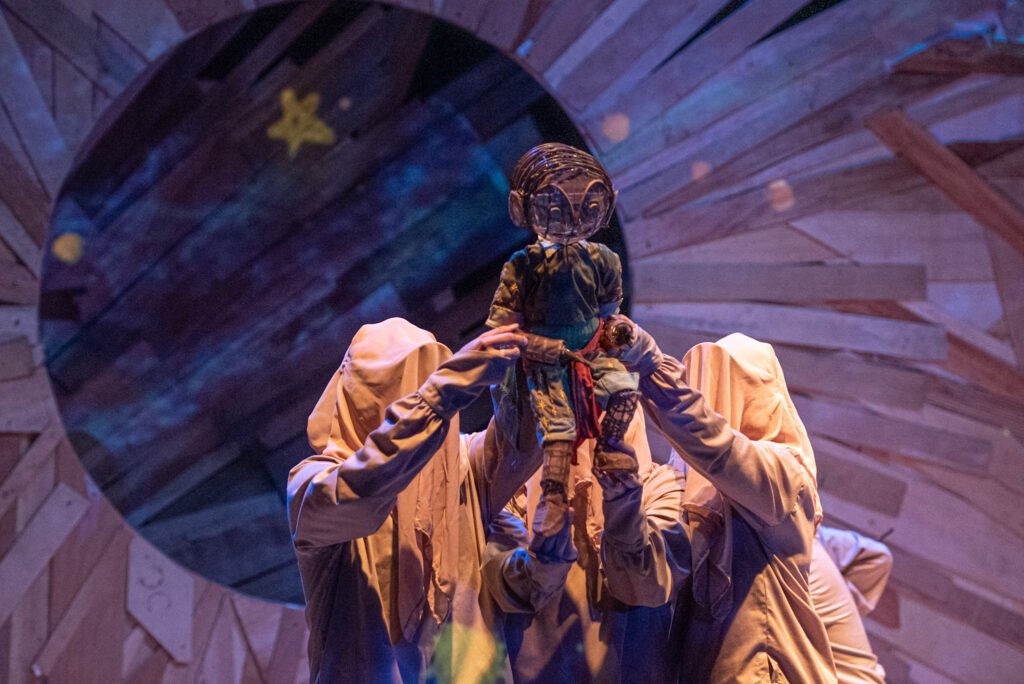

Prinsipe Bahaghari was a resounding success; you even had to stage additional shows due to popular demand! Can you recall some of the notable comments and feedback that you received in the past few weeks?
Gonzales: The general trend is that it is an enjoyable visual feast for children and a sentimental story for adults. We are happy with both comments.
Let’s look to the future! What can puppet enthusiasts and lovers of stories look forward to?
Gonzales: Aina has plans to reveal, so I’ll let her talk about all those. As for me, I’ll be taking a break until the next collaboration invitation.
Ramolete: Teatrong Mulat ng Pilipinas will be performing its annual Papet Pasyon this coming March. As for Prinsipe Bahaghari, we’re actually planning a book with Sir Vlad! We’re also happy to share that the show will have its re-run next year. We’ll definitely see you all again in 2024!
L: Photographed by Gabrielle de la Cruz, R: Courtesy of Teatrong Mulat ng Pilipinas
Before we end this conversation, I’d like to go back to how Prinsipe Bahaghari is dedicated to the younger versions of ourselves. If you were both given a chance to go back in time and leave a message to your younger selves, what would you say?
Gonzales: Be bold. Whatever doubts, painful experiences, or hardships you have and will experience are all necessary. You will carry all that you’ve learned from them as you go.
Ramolete: Just keep trying to do good. Pursue your passion because that’s where you’re meant to flourish. And while striving to do these, I hope you don’t lose hope! Always be grateful for the support you receive from family and friends, and never forget where and how you started. •
Prinsipe Bahaghari Team
Creator, Director, and Head Designer: Aina Ramolete
Assistant Director: Amihan Bonifacio-Ramolete
Writer and Translator: Vladimeir Gonzales
Video Designer: Stephen Tansiongco
Stage Designer: Ohm David
Musical Director: Arvy Dimaculangan
Assistant Musical Director: Jep Gabon
Costume Designer: Darwin Desoacido
Lighting Designer: Gabo Tolentino
Technical Director: Shenn Apilado
Puppet Creator: Nap Rivera
Stage Manager: Shania Cuerpo
Production Manager: Joshua Ceasar Chan
Cast: Arvy Dimaculangan, Jeremy Bravo, Sig Pecho, Shenn Apilado, Karlo Erfe, Harvey Sallador, Ravelyn Emerald Dar Juan, Mary Allen Asuncion, and CJ Avendaño

